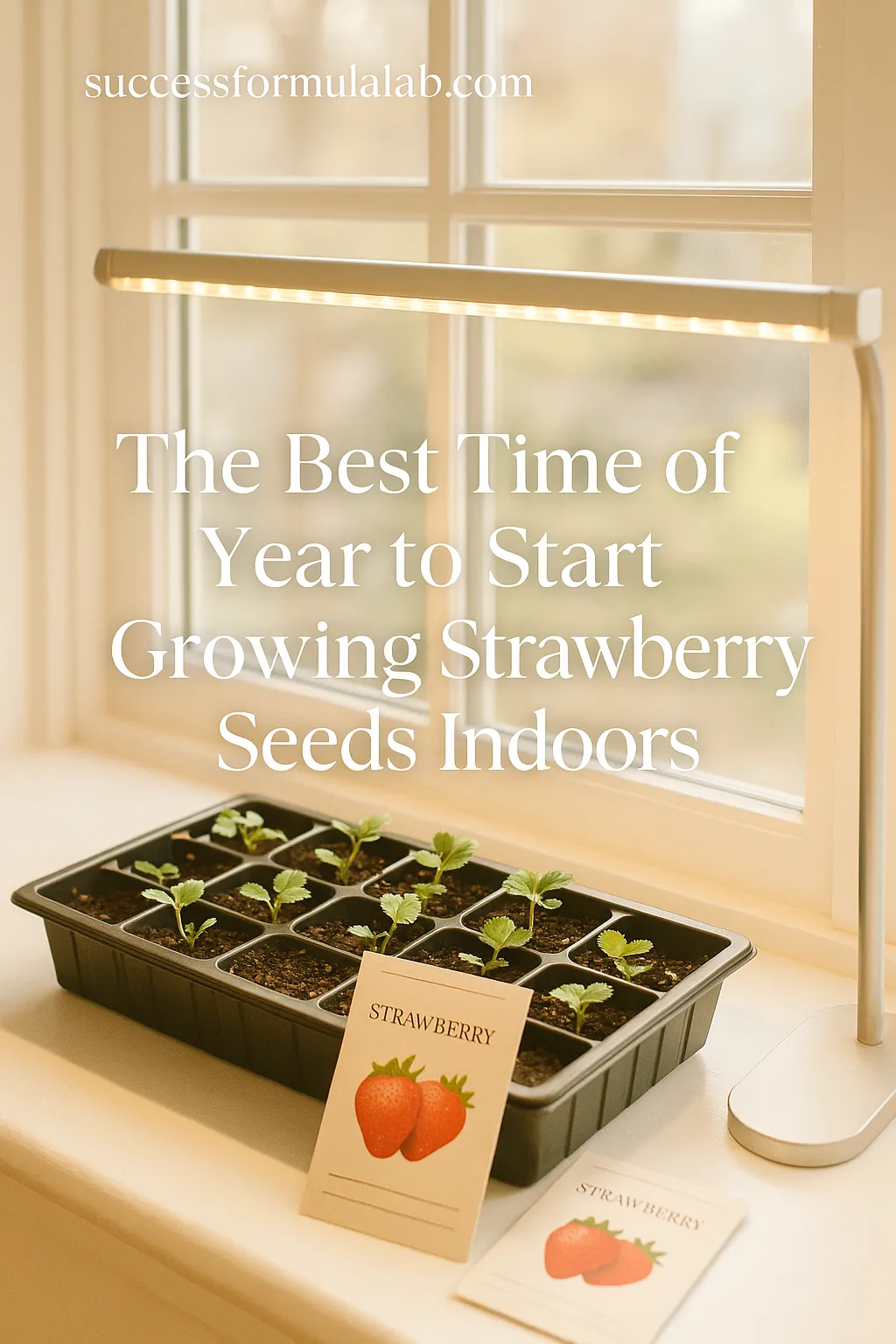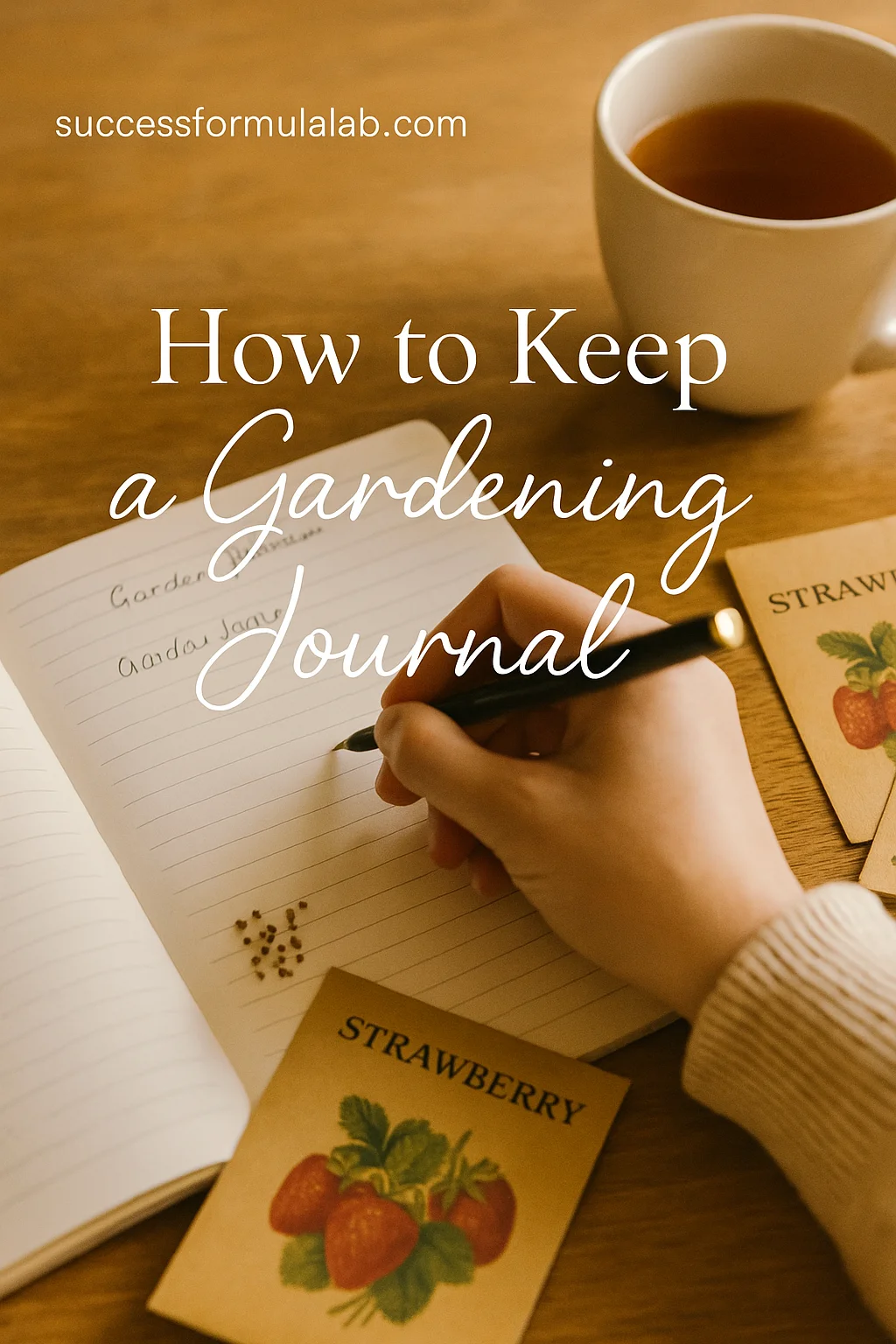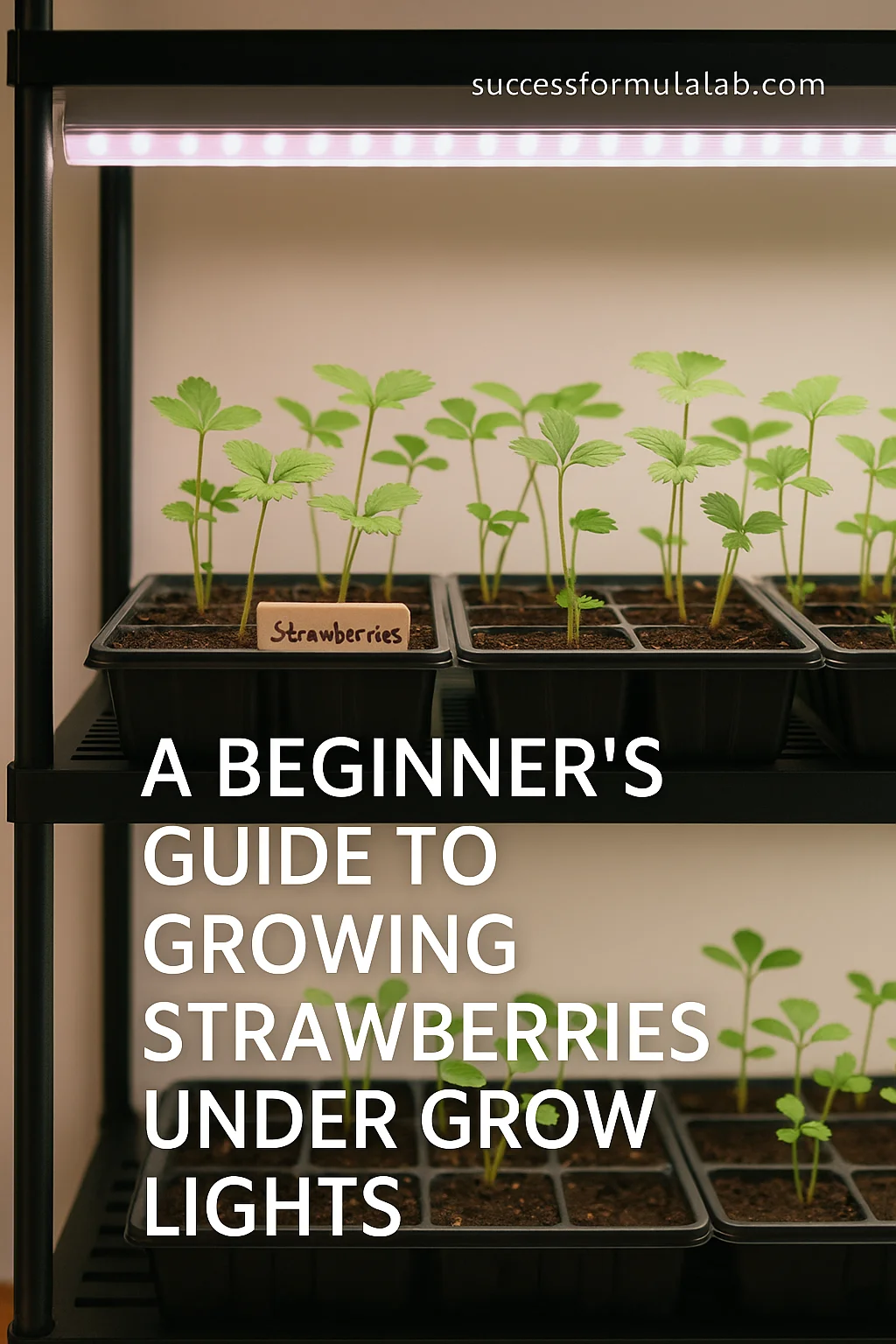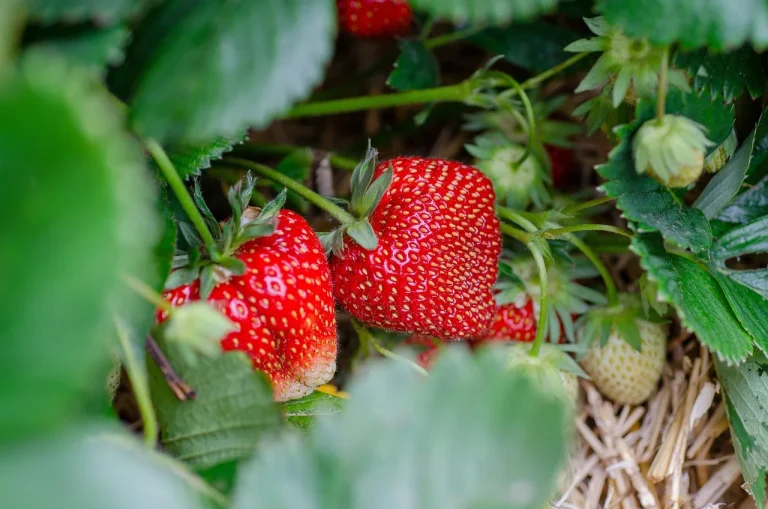Grow Your Own Strawberries—Right from Seed
There’s something incredibly fulfilling about watching tiny seeds transform into juicy red strawberries. Growing strawberry seeds indoors not only allows you to get a head start on the gardening season but also gives you control over the entire process—from sprouting to harvest. But if you’re wondering when to begin, timing is everything.

Start too early, and your seedlings could become weak and leggy before it’s warm enough to plant them outside. Start too late, and you risk missing the growing window that leads to a bountiful harvest. In this guide, you’ll discover exactly when to start growing strawberry seeds indoors, how to do it right, and how to maximize your results.
Why Start Growing Strawberry Seeds Indoors?
Indoor seed starting is an excellent way to bypass the unpredictability of outdoor conditions. You can grow stronger seedlings, extend your growing season, and enjoy earlier harvests. Here’s why starting strawberries indoors is especially beneficial:

✅ More Control Over Growing Conditions
-
You can maintain consistent warmth and light—two essentials for successful germination.
-
Indoors, you’re not at the mercy of unexpected frost or bad weather.
✅ Earlier Harvests
-
Starting early gives your strawberry plants a head start. That means you may enjoy berries sooner than if you had planted bare-root plants directly outside.
✅ Better Root Development
-
Controlled conditions lead to stronger root systems, making transplanting outdoors less stressful for the plant.
Understanding the Germination Cycle of Strawberry Seeds
Before you start planting, it’s essential to understand what strawberry seeds need to thrive indoors. These seeds have specific germination requirements that you must meet for success.
📋 Strawberry Seed Germination Requirements
| Factor | Ideal Condition |
|---|---|
| Soil Temperature | 65–75°F (18–24°C) |
| Light | Bright indirect light or grow lights |
| Moisture | Consistently moist (not soggy) |
| Germination Time | 1–6 weeks |
| Cold Stratification | 2–4 weeks in the fridge before sowing |
❄️ Cold Stratification: Why It Matters
Cold stratification mimics winter and is essential for breaking dormancy in strawberry seeds. Here’s how to do it:
-
Place your seeds in a damp paper towel.
-
Seal them in a plastic bag.
-
Store in the refrigerator for 2 to 4 weeks.
-
Label the date to keep track.
Skipping this step often results in poor or no germination.
When Is the Best Time of Year to Start Growing Strawberry Seeds Indoors?
The golden window for growing strawberry seeds indoors falls between late winter and early spring, typically January through March, depending on your local climate.
🕒 Calculate the Timing Based on Your Region
Strawberries need 8 to 10 weeks of indoor growth before they’re ready to move outdoors. Use your region’s last expected frost date to calculate when to start seeds indoors.
📍 Example Timing by Zone
| USDA Zone | Last Frost Date | Start Seeds Indoors By |
|---|---|---|
| Zone 5 (North US) | May 15 | Early March |
| Zone 6 | May 1 | Mid-February |
| Zone 7 | April 15 | Early February |
| Zone 8–9 (South) | March–April | December–January |
Knowing your zone helps you time everything perfectly, from sprouting to transplanting.
What You’ll Need to Grow Strawberry Seeds Indoors
Getting started is simple when you have the right setup. Here are the essentials:

🧰 Indoor Seed Starting Supplies
-
Strawberry seeds (preferably fresh or cold-stratified)
-
Seed-starting trays or small biodegradable pots
-
Seed-starting soil mix (light and well-draining)
-
Grow lights or a bright south-facing window
-
A humidity dome or plastic wrap
-
Spray bottle for misting
-
Labels and garden journal
🌿 Optional but Helpful Additions
-
Seedling heat mat to keep soil warm
-
Small fan for airflow and mold prevention
-
Fertilizer (gentle and organic)
How to Grow Strawberry Seeds Indoors: Step-by-Step

Step 1: Stratify Your Seeds
-
Place them in the fridge for 2–4 weeks as mentioned earlier.
Step 2: Prepare Seed Trays
-
Use a seed-starting mix, not garden soil. Lightly moisten it before sowing.
Step 3: Sow the Seeds
-
Surface sow the seeds—they need light to germinate.
-
Gently press them into the soil, but don’t bury them.
Step 4: Cover and Warm
-
Use a humidity dome or cover with plastic wrap.
-
Place in a warm area (use a heat mat if needed).
Step 5: Provide Light
-
After sprouting (usually 1–6 weeks), move the seedlings under grow lights.
-
Keep lights 2–3 inches above the plants, 14–16 hours per day.
Step 6: Thin Seedlings
-
Once true leaves appear, snip weaker seedlings to allow the strongest to thrive.
Step 7: Harden Off Before Transplanting
-
Gradually expose seedlings to outdoor conditions 7–10 days before planting outdoors.
🌱Tip: Think Beyond Strawberries
If growing your own strawberries is your first step toward self-reliant living, it’s just the beginning. A thriving garden is only part of a sustainable lifestyle. Want to take it a step further? This guide on self-sufficient backyard gardening teaches you how to build a food-producing, off-grid system—perfect for those who want real independence.
Tips for Success: Avoid These Indoor Growing Mistakes
Even experienced gardeners can stumble. Avoid these pitfalls:
-
Don’t skip stratification – It’s critical for germination.
-
Avoid overwatering – Use a mist bottle and watch for mold.
-
Don’t skimp on light – Weak lighting = weak plants.
-
Resist the urge to transplant early – Wait for true leaves and strong roots.
📌Ready to Master Backyard Gardening?
You’ve now got the tools to successfully grow strawberries from seed indoors—but why stop there?
The Self-Sufficient Backyard is your go-to guide for creating a thriving, resilient home garden. Inside, you’ll find everything from solar water systems to composting tips and growing food in all seasons.
Whether you have a small yard or a rural homestead, this guide helps you transform it into a productive, self-reliant space.
👉 Start your journey here and take the next step toward full backyard independence.
🌟 Product Recommendation Section
Recommended Resource: The Self-Sufficient Backyard
If you’re serious about growing your own food and living more sustainably, The Self-Sufficient Backyard is packed with actionable insights, including:
-
Blueprints for off-grid water, heating, and food systems
-
Planting plans for year-round gardening
-
Money-saving DIY projects that make homesteading easier
-
Real-life experience from a couple who lives 100% off-grid
Perfect for beginners and seasoned gardeners alike.
❓ FAQ – Growing Strawberry Seeds Indoors
What is the best month to start growing strawberry seeds indoors?
January through March is best, depending on your climate and last frost date.
Can I grow strawberries indoors year-round?
You can, but syncing with seasonal patterns gives the best yields.
Do strawberry seeds need light to germinate?
Yes. Surface sow the seeds so they’re exposed to light.
How long do strawberry seeds take to germinate?
Usually 1 to 6 weeks after stratification.
How do I harden off strawberry seedlings?
Gradually expose them to outdoor conditions over 7–10 days before planting outside.
Conclusion: Start Early, Grow Strong
Growing strawberry seeds indoors is more than a gardening task—it’s a skill that connects you to the rhythm of the seasons and your food supply. When timed right, it’s the start of a journey that ends with sweet, red rewards. Follow the strategies in this guide, and your strawberry patch will be the envy of the neighborhood.
Now that you know when and how to begin, take action. Prep your seeds, mark your calendar, and get growing. And if you’re ready to expand your self-reliant skills even further, don’t forget to check out The Self-Sufficient Backyard for the complete guide to backyard independence.

